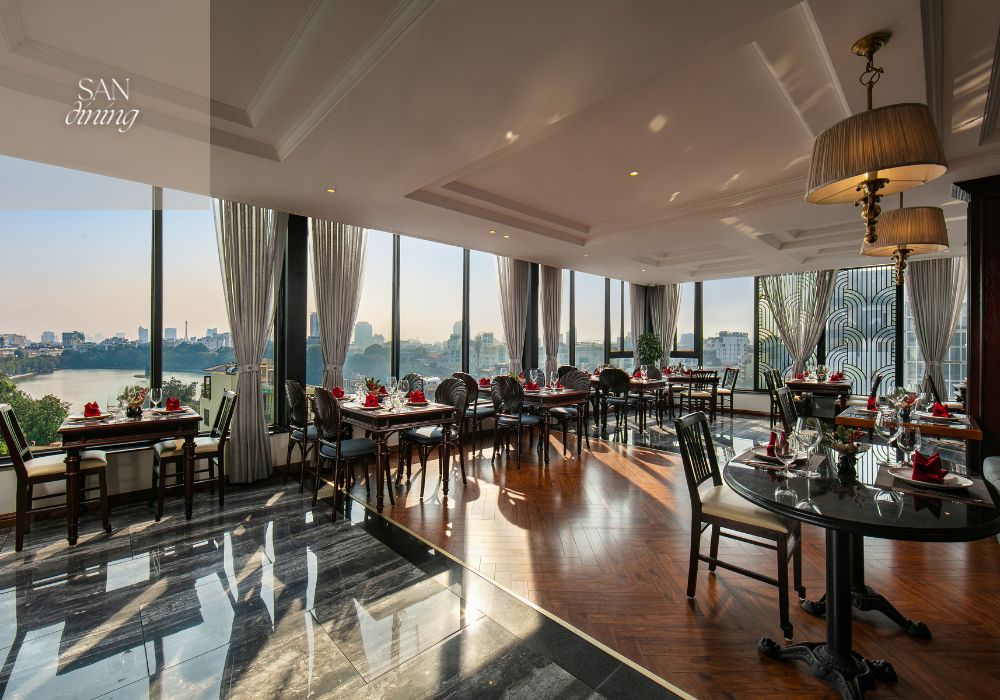Savor Authentic Eastern Cuisine With a Pan-Asian Spin for a Cooking Adventure
Getting started on a culinary trip through genuine Eastern food, boosted with a Pan-Asian twist, offers a special opportunity to check out the abundant tapestry of tastes that specify the area's diverse culinary customs. This experience invites you to savor the splendid equilibrium of preferences-- sweet, salty, spicy, and sour-- integrated by fragrant natural herbs and seasonings. Imagine the innovative fusion of Thai curry and ramen or the unforeseen delight of sushi burritos. As you ponder these attracting meals, think about the cultural narratives and historical influences that form them, each bite supplying a tale waiting to be uncovered.

Exploring Pan-Asian Tastes
In the world of worldwide gastronomy, Pan-Asian food sticks out for its remarkable variety and the harmonious interaction of flavors from various Oriental cultures. This culinary strategy celebrates the distinct active ingredients and rich practices found across the continent, producing a tapestry of tastes that is both satisfying and intriguing. Trick to Pan-Asian cuisine is its capacity to stabilize contrasting tastes-- pleasant, salted, spicy, and sour-- while highlighting the freshness and top quality of each ingredient.
From the umami-rich soy sauce of Japan to the fiery chili peppers of Thailand, Pan-Asian food provides an extensive palette of flavors. These elements are often combined in innovative means, enhancing meals with layers of intricacy. For example, the use of aromatic herbs such as lemongrass and cilantro, typical in Vietnamese and Thai food, includes a rejuvenating brightness to recipes, while the incorporation of coconut milk provides a creamy, abundant appearance.
The focus on fresh fruit and vegetables and aromatic seasonings ensures that each meal is not only a feast for the palate yet also for the senses. Pan-Asian cuisine invites diners to start a cooking journey, exploring the large and varied landscapes of Oriental gastronomy with every bite.
Combination Meals to Try
While Pan-Asian food is celebrated for its standard tastes, the contemporary cooking landscape is significantly accepting combination dishes that blend these traditional aspects with influences from other regions. This cutting-edge approach not just honors the rich heritage of Oriental cookeries however additionally introduces unique taste experiences that interest contemporary tastes.
An archetype of such a combination meal is the Korean-Mexican taco, where marinated bulgogi beef is wrapped in a cozy tortilla, covered with kimchi and a spicy gochujang-infused salsa. This mix weds the vibrant, tasty flavors of Korea with the dynamic, fresh elements of Mexican cuisine. Likewise, sushi burritos have obtained appeal, joining together the fragile creativity of Japanese sushi with the hearty, hand-held convenience of a burrito, commonly including fusion active ingredients like tempura shrimp and avocado with a drizzle of wasabi mayo.
An additional significant meal is Thai curry ramen, which infuses the velvety, fragrant seasonings of Thai curry right into the reassuring broth of traditional Japanese ramen, creating a harmonious blend that tantalizes the senses. These combination meals expand past mere uniqueness; they stand for a culinary dialogue between societies, urging expedition and development on the planet of Pan-Asian cuisine.
Vital Ingredients and Spices
To genuinely value Pan-Asian food, one have to comprehend the crucial components and spices that form its foundation. This diverse cooking design attracts from an abundant tapestry his explanation of Eastern customs, employing an unified mix of flavors and structures. Trick components include soy sauce, fish sauce, and oyster sauce, which present a savory umami depth important to Asian recipes. Complementary to these are rice vinegar and mirin, providing a fragile level of acidity and sweet taste.
Aromatic components are crucial, with garlic, ginger, and lemongrass being common across various Pan-Asian dishes. These ingredients provide a great smelling base that boosts the complexity of tastes. Spices such as celebrity anise, cardamom, and cinnamon introduce heat and personality, resembling website link impacts from areas like China and India.

Cooking Methods and Tips
Mastering the art of Pan-Asian cuisine requires familiarity with its unique food preparation strategies, each adding to the vibrant tapestry of flavors this cooking tradition is commemorated for. Central to these methods is the stir-fry, a quick cooking method that preserves the nutritional integrity and dazzling shades of active ingredients. Using a frying pan, the stir-fry technique enables also warm circulation, important for attaining the particular texture and flavor balance of Pan-Asian recipes.
One more essential method is steaming, specifically widespread in Chinese food. This mild technique keeps the natural flavors and nutrients of components, making it suitable for fish and shellfish and vegetables. Dumplings, a beloved staple, frequently gain from steaming, leading to soft, succulent structures.
Barbecuing, likewise integral, presents smoky depths to dishes such as Oriental bulgogi or Japanese yakitori (Romantic restaurants Islamabad). This strategy commonly includes marinading components, enabling flavors to permeate deeply prior to cooking over an open fire or warmer
Finally, understanding the art of stabilizing flavors-- pleasant, sour, salty, bitter, and umami-- is vital. Effectively layering these aspects can boost a dish from normal to Website remarkable, offering a facility and satisfying cooking experience that symbolizes the essence of Pan-Asian cuisine.
Eating Experiences Worldwide
Around the world, Pan-Asian cuisine supplies an unparalleled dining experience, celebrated for its abundant tapestry of flavors and dynamic discussions. This culinary phenomenon has gone beyond social limits, capturing the hearts and tastes of food enthusiasts worldwide. In worldwide cities like New York, London, and Sydney, Pan-Asian dining establishments serve as fusions where cooking traditions from Thailand, Japan, China, and beyond merge, offering restaurants with a diverse mix of dishes that highlight the area's diversity.
The international charm of Pan-Asian food lies in its capability to supply both credibility and technology. Cooks skillfully marry standard components such as lemongrass, soy sauce, and miso with modern techniques, resulting in dishes that are both familiar and refreshingly brand-new. This fusion allows diners to embark on a culinary journey that values heritage while welcoming modernity.
Furthermore, dining experiences are elevated through attentively developed environments that reflect the ethos of Pan-Asian visual appeals. From minimal Japanese-inspired insides to lively Thai-themed areas, each restaurant offers a distinct setting that enhances the cooking offerings. Because of this, customers are not merely consuming a dish yet partaking in a social experience, making Pan-Asian eating a really global sensation.
Verdict
The exploration of Pan-Asian cuisine offers a profound understanding of the elaborate interplay of flavors and culinary customs across Asia. By welcoming blend dishes such as Thai curry ramen and sushi burritos, the cooking journey not just highlights the adaptability of conventional components but likewise showcases ingenious contemporary strategies. This gastronomic journey, enriched by cooking techniques and essential spices, supplies an unique chance to value the multiculturalism and cooking virtuosity that define Pan-Asian food on an international range.
Beginning on a cooking journey via authentic Eastern cuisine, improved with a Pan-Asian twist, uses an unique possibility to discover the abundant tapestry of flavors that specify the area's varied cooking practices.In the realm of international gastronomy, Pan-Asian food stands out for its amazing variety and the harmonious interplay of tastes from various Oriental societies. Key to Pan-Asian food is its capability to stabilize contrasting flavors-- pleasant, salty, spicy, and sour-- while highlighting the quality and high quality of each active ingredient.
